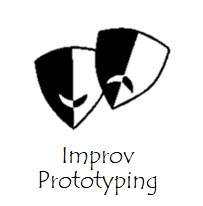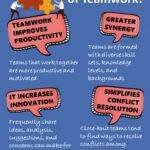
Improv Prototyping is a liberating structure that helps groups explore new behaviors for the challenging scenarios they face.
Improv Prototyping actively engages groups to learn by observing and trying different behaviors in an improvised environment. Participants identify and act out solutions to chronic or daunting problems.
The purpose of Improv Prototyping is to re-enact a challenging scenario faced by a group or an individual and work together to devise different behavioral strategies and interventions by acting it out. A diverse mix of people is invited to dramatize simple elements that work to solve a problem.
The twist that this structure brings is that the person who introduced the scenario becomes the ‘director’, while the others become the ‘actors’. This allows the director to playfully experiment with strategies, behaviors and interventions.
You can engage a group to learn and improve rapidly from tapping three levels of knowledge simultaneously: (1) explicit knowledge shared by participants; (2) tacit knowledge discovered through observing each other’s performance; and (3) latent knowledge, i.e., new ideas that emerge and are jointly developed. This powerful combination can be the source of transformative experiences and, at the same time, it is seriously fun.
The emphasis here obviously lies on improvising; try new things together and discover and learn from what unfolds.
Four Structural Elements
1. Structuring Invitation
- Invite participants to identify a frustrating chronic challenge in their work, then to playfully experiment, invent, and discover better ways to address the challenge by acting out the situation and possible solutions.
2. How Space Is Arranged and Materials Needed
- An open space or stage at the front or in the middle of a room
- If needed, props for the scene or scenes to be offered
- Small clusters of chairs to accommodate all participants
3. How Participation Is Distributed
- Everyone is included either as players or observers
- A few volunteers to be “players”
- Everyone else acts as observers and evaluators, then co-creative players
4. Sequence of Steps and Time Allocation
- Explain what will be done and describe the sequence of steps. 2 min.
- Set the stage by describing the scenario that will be acted out and the various roles. 3 min.
- Players on stage enact the scene. 3–5 min.
- Each small observer group debriefs with 1-2-4-All to identify successful and unsuccessful “chunks” from the scene that they just observed. 5 min.
- Each observer group then pieces together the successful chunks into a new prototype and volunteers from within the group act out the new prototype for their own group only. 5 min.
- Participants from one of the observer groups who judge that they have an improved prototype volunteer to come on stage and enact their version in front of the whole group. 3–5 minutes.
- Continue with as many rounds as necessary to arrive at one or more prototypes that are good enough to put into practice.
Purposes and Objectives
- Enable people to act their way into new thinking: Improv Prototyping is a rehearsal for real life
- Break a task that seems daunting into smaller pieces
Engage and focus everyone’s imagination on solving messy challenges - Break through frozen or resistant behaviors
- Create an engaging and fun alternative to dry or unproductive training
- Work across functional and disciplinary barriers
- Help people learn from peers that have behaviors that solve the problem
Tips
- The best Improv Prototyping happens when you stay close to a real challenge that a team or a person is facing.
- Invite groups to exaggerate, but remain grounded. This is also a wonderful opportunity for cathartic laughter.
- Sometimes, groups get stuck talking about their play rather than enacting it. Do your best to encourage teams to start acting as soon as possible and see what happens.
- Improv Prototyping requires a level of safety and comfort with each other that you usually don’t have at the start of a workshop, training or meetingt
- Some people don’t like the roleplay that is an inherent part of Improv Prototyping
- Be as inclusive as possible: invite everyone in different roles to join in
- Consider creating three supporting roles depending on the complexity of the scenario: stage manager, creative director, and facilitator.
- Replay scenes that do not capture the imagination or generate new ideas
- Invite people to let go of assumptions and biases by putting themselves in the shoes of others, e.g., doctor plays nurse and nurse plays doctor, student plays professor
Invite creative director to gently redirect the players as needed
Examples
- For Scrum Masters to depict significant challenges they face when working with development teams and exploring different strategies and behaviors
- For participants to act out a personal fear and explore different coping strategies
- For sales reps to invent new ways to interact with their customers
- For managers to make their interactions with people who report to them more productive
- For health-care providers to practice end-of-life and palliative-care conversations with patients and family members
- For teachers to discover effective responses to disruptive classroom behaviors


